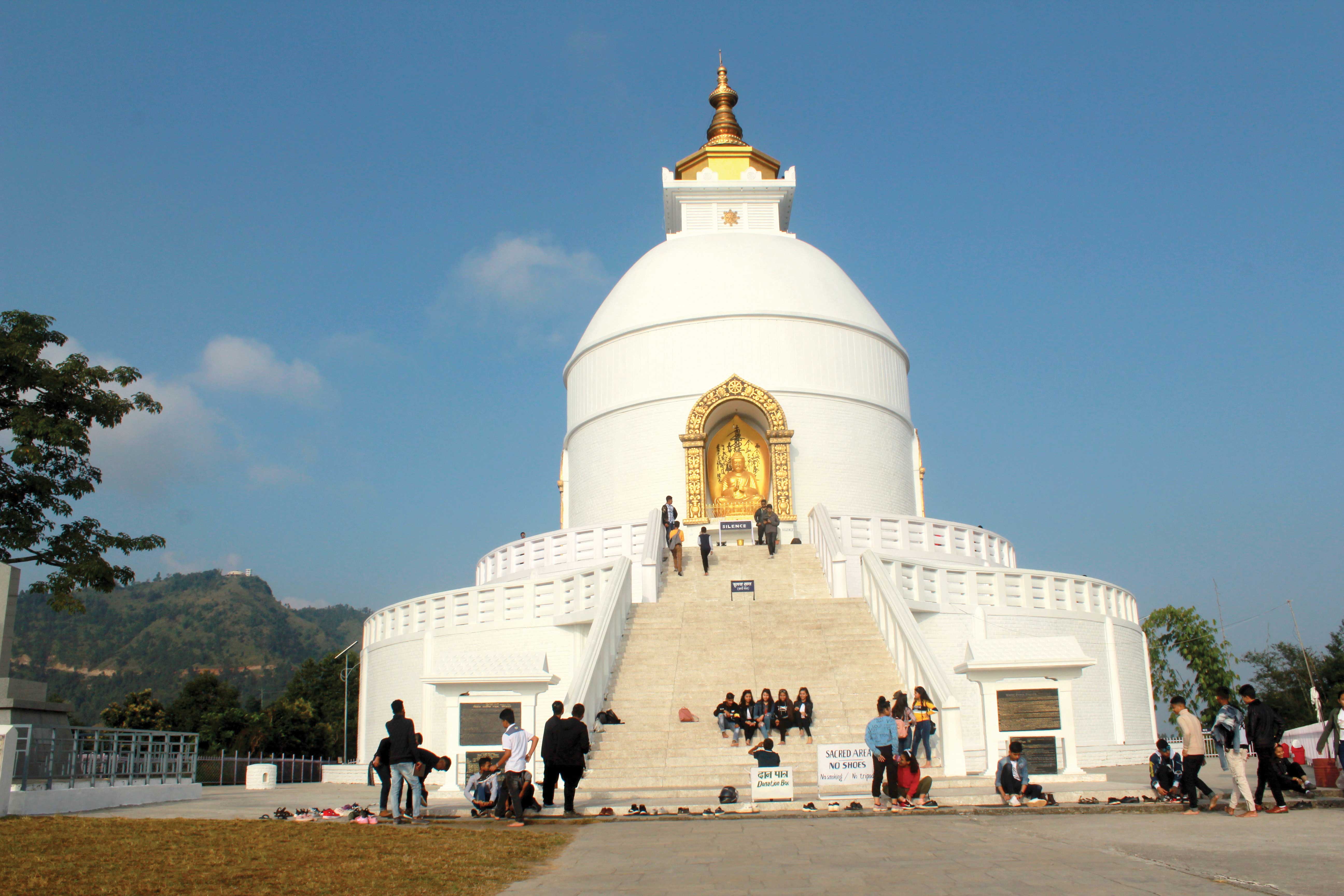Trying to listen to the guide’s safety briefing was proving difficult, with the sound of my heart pounding furiously in my ear. After collecting our equipment, we gingerly climbed into our transport and cast off from the entry point, not knowing what lay before us. Meeting with the first obstacle, we stretched to hear our instructor’s command. ‘Backpedal hard!’ he ordered. Six of us frantically carried out his instructions, tightly gripping our paddles and backpaddling furiously; at the same time bracing for a probable impact. Staring through incessant splashes of water, I saw the bow veer slowly away from the boulder in our path.
My eventful joyride was not quite as expected, unlike what I had witnessed earlier in the day. On that bright morning, a festive-like atmosphere with music, dancing and cheering filled the air at the grazing field beside the Arniko Highway, right at the 95 km marker east of Kathmandu. Professional Nepalese rafters had come to participate in Nepal’s First National Rafting Championship. With synchronized strokes, the gutsy competitors expertly maneuvered through the rolling waters of the Bhote Koshi. How easy it had seemed then.
A loud roar of rushing water stirred me from my thoughts. “Here we go again!” Our amateurish skills soon proved inadequate as the river took us through what seemed like a never-ending game of flash flood pinball. Adrenaline surged through my body as the raft hurtled through the raging torrent. Literally at the edge of my seat, I felt an alleviating sensation of euphoria as, time and again, we narrowly missed looming obstacles. We had braved the river, emerging shaken but unscathed.
Whitewater rafting involves a group of six to eight paddlers, with the help of a guide, navigating through fast flowing rivers containing turbulent rapids. One of the reasons behind its thrill factor is overcoming inherent natural hazards. The river, for all its picturesque magnificence, conceals dangers such as debris and undercut rocks. An awesome run in the rapids can be marred by a small mishap, so ensure that the rafting guide you sign up with is skilled in negotiating such challenging situations.
Since the mid-1970’s, commercial whitewater rafting in Nepal has grown with many entrepreneurs setting up shop in Thamel and at Lakeside, Pokhara. Rafting standards have improved over these years with a growing number of Nepalese river guides who have gained overseas experience, traveling abroad to hone their skills. They bring back not just better quality equipment and updated rafting techniques but, more importantly, an enhanced awareness of safety.
Most accidents occur because of a paddler’s irresponsible behavior. There is strictly no drug or alcohol consumption before rafting. Chandra Ale, who is a qualified rafting guide instructor, has seen accidents that could have easily been avoided if people had followed instructions given in the initial safety briefing. “I’ve seen clients hit their own face with the paddle’s T-grip while rafting because they held the paddle wrongly despite being demonstrated the correct way.”
Guides should be certified in Swiftwater Rescue and well-versed in first-aid. However, there are rouge operators out to make a quick buck who may disregard safety. Companies should provide equipment that has been quality-tested and include a comprehensive safety setup, like having safety kayaks accompany rafting trips. Look at photos in their offices or ask previous participants for feedback. Cost concerns should never take second place to safety. ‘You pay for what you get.’
It is hard to sink a raft. Made of hardy polyvinyl chloride (PVC) fabric, it is highly buoyant and built to withstand impact. Even in the unlikely event of its surface being punctured, a raft can still stay afloat. As it consists of several air chambers, damage to one chamber is localized and the raft does not deflate entirely. Other chambers maintain the raft’s overall buoyancy and it can be paddled to shore for repairs. Modern day rafts are self bailing as there are openings at the bottom of the hull, so water flows out fast and does not flood the interior.
Besides the adrenaline rush, there are other benefits to this activity. Rafting makes all who are onboard work as a team and co-ordinate their paddling to propel the craft. If you like outdoor adventures, but abhor the heat and humidity which accompanies activities such as trekking, then rafting is the perfect choice. It has minimal impact on the river and promotes environmental conservation. Nothing gets left behind in the river and rafters, through their first-hand encounter, learn to value waterways more, as the destruction of river environments means losing a place of healthy good fun.
A paddler’s fitness plays a part during rafting, but you do not need Herculean stamina. Rafting involves more of a collective effort than individual strength. Besides the Bhote Koshi, other popular rivers for commercial rafting are the Trisuli, Kali Gandaki, Seti, Karnali and Sun Koshi. Most of these rivers are Class 3 to 4, but there are lengthy sections that allow for a lazy drift (see the International Scale of River Difficulty). With such variety in terms of difficulty grades, rafting can be done by anyone. Even non-swimmers can do it. You can plan a package according to your time schedule, from a single-day escapade to a multi-day expedition.
The best months to raft are September to November and March to May. Monsoon season (June to October) is not conducive for rafting as the massive river flow poses tremendous risk. River profiles change and navigation becomes unpredictable. In winter, rivers run dry and with dwindling water flow there is less excitement.
Nepal is one of the premier venues in the world for hitting the rapids, with its volatile geological landscape that sets the scene for captivating fluvial voyages. It guarantees highly-charged rafting experiences at affordable prices. Whizzing down steep mountain streams, bumping through churning hill rapids, drifting along expansive rivers—all of these can be found in Nepal’s own backyard.










